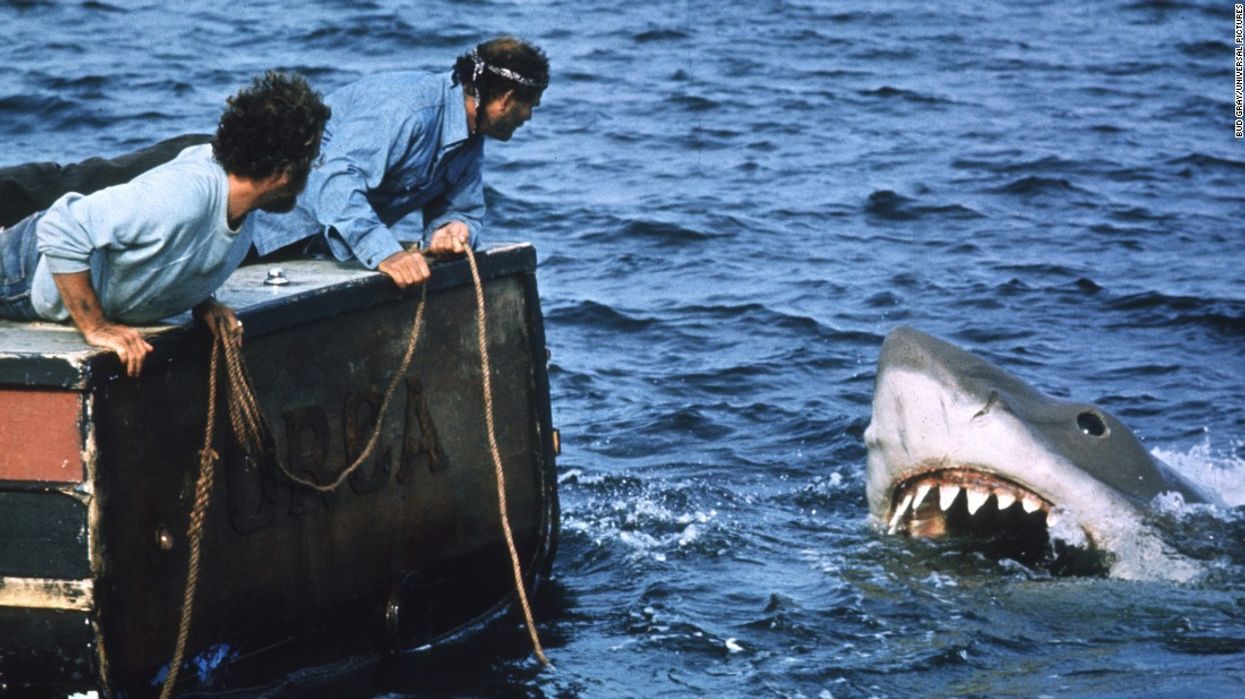Watch: How 'Jaws' Can Help Us Redeem the Summer Movie
What did Spielberg know back then that we have forgotten?

This is a tricky time if you're trying to make archetypal smash-'em-up, crash-'em-up, don't-think-too-hard summer movies; all market indications suggest that the classic summer blockbuster may be outpaced by smaller-budget, more offbeat films during the current season. It's worth watching Nolan Dean's new video essay, then, to examine the architecture of a classic summer movie, and learn how a truly great example of the form might be made once again, through a close look at Steven Spielberg's Jaws.
Watch the video below, and then read our takeaways about what Dean proposes as the building blocks of this masterpiece:
Don't show all your cards
The key to the first half of the film is that our fear of Jaws is based mostly on the fact that we can't see his entirety—which teaches an important lesson about developing suspense in movies: viewers are always more scared of the unseen than of the seen. In this film, we see Jaws' snout, or his tail, or his fin, but not the whole shark. We also hear stories about him, about his eyes, about the way he lunges at his prey. And as this evidence grows, viewers' stomachs start to churn, so that when the beast finally makes his entrance, complete with eyes, jaws, and everything else, the moment is truly terrifying, even at this point in film history. (For another example of how this works, think of the stories told about Hannibal Lecter before he even appears onscreen in Silence of the Lambs.)
Grapple with fears
An essential element in any horror or suspense film, as Dean aptly points out here, is that characters must wrestle with long-held, basic fears. (Remember Indiana Jones' fear of snakes in Raiders of the Lost Ark?) And here we have that conflict in the form of Mayor Martin Brody's (Roy Scheider) fear of water, which he must of course conquer if he wishes to do battle with, and eventually vanquish, Jaws. By pitting a character against one of their personally held neuroses, you can raise the stakes of storytelling and thus increase the suspense. Given that most of us, from childhood, have an innate fear that a monster might come and gobble us up, the shark here embodies that fear—and wrestling with the shark could become a scary metaphor for wrestling with all of childhood.
Any adventure or suspense film worth its salt must make viewers sympathetic with its hero.
Establish empathy
Another important task that the first half of Jaws accomplishes is establishing, and holding, viewers' empathy with the characters in the film. We feel most sympathetic, of course, with Brody, who must simultaneously help his townspeople enjoy the season and combat a monstrous shark whose presence threatens to destroy said season; the script develops our sense of both responsibilities to the fullest, so that when the man-on-shark conflict takes place in the film's second half, it is particularly fraught. Here again, the lesson is clear: any adventure or suspense film worth its salt must make viewers sympathetic with its hero as part of its structure.
Amp up the adventure
And of course, what would a summer movie be without adventure, special effects, explosions, and surprises? The film in question has plenty of these, played to the hilt. We could look back at Jaws and perhaps deem it somewhat primitive, but nevertheless, if you're watching it carefully enough, and you've managed to take it at face value, it can still draw you in. The lesson here is the following: if you're making an adventure movie, don't neglect the adventure part for the exposition, or for witty dialogue.
Do you have any favorite adventure films? Any ideas about key elements good summer movies possess? Let us know in the comments.
Source: Nolan Dean











